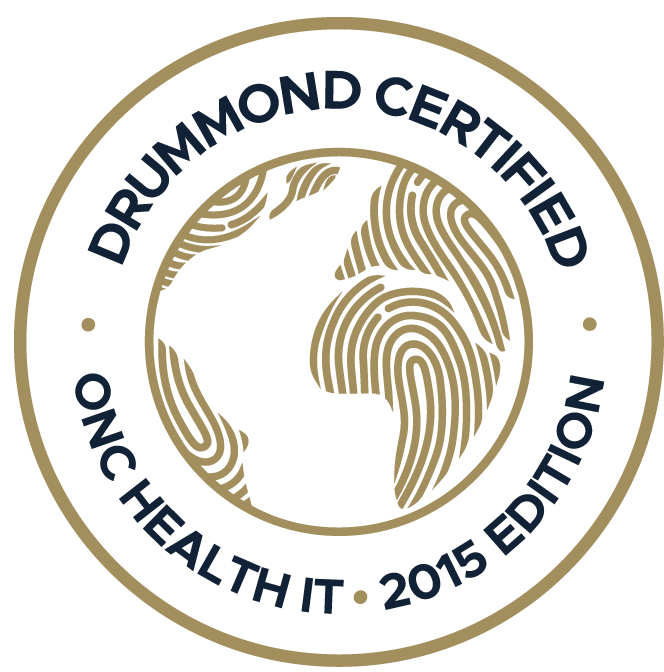Is your practice struggling to overcome operational bottlenecks despite trying everything from hiring extra staff to outsourcing certain tasks? A reliable healthcare practice management software might be the answer...
Telehealth platforms are rapidly proliferating across the healthcare landscape. This widespread adoption of this new practice stems from the limited access to care for patients from rural areas. Shockingly, recent data highlights that nearly 80% of rural regions in the United States are categorized as lacking adequate medical services and designated as health professional shortage areas.
To address the grave issue of inaccessibility to healthcare, the US government is shifting its focus to telemedicine. That’s because telemedicine allows patients from inaccessible areas to interact with healthcare providers through a digital telehealth platform. This practice eliminates the need for patients to pay a physical visit to a healthcare provider.
However, telemedicine comes with its unique set of challenges for healthcare practices. Interestingly, integrating EHR software with the telehealth platform is one proven way to mitigate these challenges. Here, we discuss what EHR and telemedicine integration means and how this innovative approach can benefit a healthcare practice as well as the patients.

Understanding EHR and Telehealth
EHR is basically the electronic version of a patient data chart. EHR refers to digital versions of patients' paper charts containing comprehensive information about their medical history, diagnoses, medications, treatment plans, immunization dates, allergies, radiology images, and laboratory test results. These electronic records are accessible securely by authorized healthcare professionals.
Recently, electronic health records have garnered widespread interest in healthcare setups. That’s because of its ability to streamline administrative tasks and promote optimal patient care. According to statistics, 96% of general acute care hospitals had opted for an EHR system by 2021.
On the other hand, telehealth, also known as telemedicine, involves providing healthcare services remotely through telecommunication technologies. This can include virtual consultations, video conferencing, remote monitoring, and other digital means. Patients can consult healthcare providers from the comfort of their homes, eliminating the need for physical visits to the clinic.
EHR (Electronic Health Record) and telemedicine are two essential components reshaping the landscape of modern healthcare. Integrating EHR software with telemedicine platforms entails connecting these two technologies seamlessly.
It means that healthcare providers can access the patient's electronic health records during a telemedicine consultation in real time. This integration ensures that all necessary patient data is available during the virtual visit. This ultimately ensures informed decision-making and provides a more holistic approach to care. That’s not all! Integrating EHR software with telehealth platforms offers numerous additional benefits.

Benefits of Integrating EHR Software with Telehealth Platforms
Research supports the narrative that integrating telehealth programs into a hospital's current EHR system setup optimizes the advantages of telemedicine. Let’s further explore the benefits of integrating electronic health record software with telemedicine platforms.
1. Increased Efficiency
Integrating EHR (Electronic Health Record) software with telemedicine platforms significantly enhances efficiency in healthcare delivery. This integration eliminates the need for manual data transfer or redundant entries. Thus, there is a significant reduction in administrative burdens and saving time for both healthcare providers and patients.
A study evaluated the impact of telemedicine on staff efficiency and concluded that 97% of the staff that participated in the study found it a helpful tool. Moreover, they reported a significant improvement in patient management and patient education using telemedicine platforms. EHR software can help boost efficiency further through its focus on convenient access to patient data.
Telemedicine consultations seamlessly access patient data directly from the EHR system. During the virtual visit, healthcare professionals can review medical history, medication lists, allergies, and previous test results. This instant access to comprehensive patient information ensures that consultations are productive and tailored to the individual's needs.
2. Seamless Clinical Workflow
Integrating EHR (Electronic Health Record) software with telehealth platforms results in a seamless clinical workflow. Telemedicine consultations are seamlessly incorporated into the existing healthcare processes, aligning with how healthcare professionals operate daily. This integration ensures a cohesive experience for the care providers and the patients.
When EHR is integrated with telemedicine systems, patient data is automatically retrieved and available during the virtual visit. Healthcare providers can review medical histories, medication lists, and relevant records without disruption, leading to more informed consultations. This efficiency is critical to providing a high standard of care while maximizing the limited consultation time.
Additionally, integrated EHR and telemedicine systems facilitate easy documentation of the virtual visit. Patient information and interactions can be promptly recorded within the EHR during or after the telemedicine appointment. This documentation contributes to maintaining a comprehensive patient record. This approach also ensures accurate billing and coding for the services provided.
3. Improved Patient Care
Integrating electronic health record software with telemedicine platforms amplifies the achievement of the “quadruple aim.” This approach results in improved health outcomes, a superior patient experience, reduced costs, and an enhanced experience for healthcare professionals.
A critical aspect of this integration is the quality of health information. An interoperable EHR system ensures that comprehensive and accurate patient information is readily available during telehealth consultations. This availability translates into more informed decision-making, personalized treatment plans, and improved patient health outcomes.
Furthermore, the integration enhances the overall patient experience. Patients find connecting with healthcare providers through telemedicine convenient, eliminating barriers like travel and wait times. Seamlessly accessing their health records during virtual consultations empowers patients to discuss their health actively. This fosters a sense of involvement and understanding of their own care.
4. Reduced Economic Burden
Integrating EHR (Electronic Health Record) software with telehealth platforms holds the potential to significantly reduce the economic burden on patients and the healthcare system. A compelling study highlighted substantial cost savings for patients utilizing telemedicine. It estimated savings of approximately $60–70 per patient per visit. Moreover, the overall program showcased significant cost-effectiveness, with savings ranging from $9,430 to $ 11,170 compared to usual care.
Telemedicine substantially reduces direct and indirect costs for patients. The elimination of travel costs, parking fees, and potential childcare expenses related to in-person visits results in immediate financial relief. Patients can consult with healthcare professionals from their homes. They can ensure quality care without the additional financial strain of traditional in-person visits.
Furthermore, integrating EHRs in telemedicine reduces costs for healthcare providers and institutions. Streamlined access to electronic health records means fewer redundant tests and procedures, resulting in considerable savings. Additionally, operational costs linked with managing and storing paper records are drastically reduced, making the healthcare system more economically sustainable in the long run.
5. Enhanced Patient Satisfaction
Integrating EHR (Electronic Health Record) software with telemedicine platforms significantly enhances patient satisfaction, a cornerstone of modern healthcare. By merging the efficiency of EHR in workflow management with the accessibility of telemedicine, the overall patient experience improves significantly.
A key aspect contributing to enhanced patient satisfaction is the seamless access to medical records during a telehealth consultation. Patients can easily discuss their medical history, concerns, and treatment plans with healthcare providers, promoting a sense of involvement and trust in their care.
Interestingly, a study highlighted the high levels of satisfaction reported by both patients and healthcare providers within a telehealth model. Telemedicine is crucial in offering improved access to specialty care, particularly in rural or underserved areas. Patients can now consult with specialists without the need to travel long distances, leading to increased satisfaction with the healthcare system.
Practice EHR - ONE With Seamless Telehealth Integration!
Practice EHR offers ONE platform for unparalleled EHR services and a seamless TeleVisit experience. Additionally, healthcare providers can effortlessly communicate with patients through the integrated patient portal. Patients can use this portal from Practice EHR to send and receive messages, request appointments, pay bills, and much more. Moreover, Practice EHR ensures hassle-free onboarding and 24/7 customer support at every step of the process.
Request A Demo today and explore the possibility of reaching out to more patients using our resourceful TeleVisit feature integrated with the most intuitive EHR software from Practice EHR!
Topics: Patient Care, EHR Solution, New Technology, Telemedicine, Medical Billing, EHR, Quality of Patient Care, Telehealth Platforms
RECENT POSTS



TOPICS
- EHR Solution (191)
- EHR (124)
- digital age (117)
- Patient Care (116)
- Medical Billing (110)
- Specialty-Specific EHR (110)
- Industry Update (97)
- Technology in Healthcare (84)
- EHR Features (79)
- Small Practice (77)
- Medical billing services (72)
- HIPAA Security (62)
- Integrated EHR (62)
- RCM (62)
- New Technology (44)
- Cloud-based EHR (43)
- Telemedicine (42)
- Healthcare Office Management (40)
- Practice EHR News (38)
- Kiosk (31)
- Revenue Cycle Management (28)
- AI Solutions (23)
- ePrescribing (21)
- AI Scribing (16)
- Best EHR Software (16)
- EMR (12)
- Practice Management Software (12)
- AI-powered Medical Billing (10)
- Client Favorites (10)
- Practice Automation (10)
- TeleVisit (10)
- The ONE (10)
- AI EHR (9)
- Switching to New EHR (9)
- MACRA/MIPS (8)
- Patient Portal (8)
- Urgent Care (8)
- AI Scribe (7)
- Best EHR Practice (7)
- EHR Integration (7)
- Psychiatry EHR (7)
- E-Prescribing (6)
- Product Updates (6)
- events (6)
- AI scanning (5)
- MIPS (5)
- Automated Health Tools (4)
- HIPAA (4)
- Insider (4)
- Internal Medicine EHR (4)
- MIPS Reporting (4)
- Mobile EHR (4)
- Orthopedics EHR (4)
- Podiatry (4)
- Podiatry EHR (4)
- Telehealth Platform (4)
- Chiropractic EHR (3)
- Digital Experiences (3)
- EHR Flaws (3)
- EHR Implementation (3)
- EHR for Chiropractors (3)
- EHR for Small Practices (3)
- Family Medicine EHR (3)
- Integrated Practice Management (3)
- Medical Practice Management Software (3)
- Patient Check-in Kiosk (3)
- PracticeEHR GO App (3)
- Regulatory Updates (3)
- Telehealth Platforms (3)
- Clearinghouse (2)
- Dermatology EHR (2)
- EHR Scheduling (2)
- Eligibility Verification in Medical Billing (2)
- Foot and Ankle Care (2)
- Foot and Ankle EHR (2)
- Health records 101 (2)
- Medical Coding Services (2)
- Medical Credentialing (2)
- Multilingual AI Scribe (2)
- Quality of Patient Care (2)
- Reporting Under MIPS (2)
- Risk and Liability in Medical Settings (2)
- What Works Clearinghouse (2)
- AI Scan (1)
- Bariatric EHR (1)
- Behavioral Health Practices (1)
- Billing Communication (1)
- Billing for Private Practices (1)
- Cardiology EHR (1)
- Cash Flow (1)
- Cashless Payments (1)
- Charting (1)
- Data Security (1)
- Dos and Don'ts (1)
- EHR Guides (1)
- EHR KPIs (1)
- EHR Questions to Ask (1)
- EHR Transition (1)
- EHR for Chronic Illness (1)
- EMR vs EHR Difference (1)
- ENT EHR (1)
- Endocrinology EHR (1)
- Family Medicine (1)
- Gastroenterology (1)
- Gastroenterology EHR (1)
- General Surgery EHR (1)
- Geriatric AI scribe (1)
- Geriatrics EHR (1)
- Guides (1)
- Healthcare Compliance Certification (1)
- Healthcare Practice Office Management (1)
- Help Center Videos (1)
- Insurance Reimbursement (1)
- KPI (1)
- Key Performance Indicators (1)
- Lab Processing (1)
- MACRA (1)
- Medical Billing Partner (1)
- Nephrology EHR (1)
- Neurology EHR (1)
- Pain Management EHR (1)
- Pediatrics EHR (1)
- Physical Therapy EHR (1)
- Practice Cash Flow (1)
- Practice Efficiency (1)
- Pulmonology EHR (1)
- Reconsider Your EHR (1)
- Simplify Practice Management (1)
- Staffing in Healthcare (1)
- Switch Medical Billing Providers (1)
- Urgent Care Medical Billing (1)
- Urology EHR (1)
- Voice-Activated AI Scribe (1)
- insurance claim denials (1)








